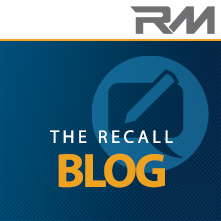Are We Headed Towards the Matrix?
Are We Headed Towards the Matrix?
A Blog Post by Sean Reyes, Chief Marketing Officer for Recall Masters
If you’ve never seen the movie “The Matrix,” the basic premise of the story is that machines have taken over the planet and placed every human in this false sense of security while, at the same time, using them as energy sources (human batteries). I’m not saying that’s what’s happening or where we’re headed, but hear me out.
In the case of electric vehicles, many real challenges are facing us now. Are they good for the environment? Many think so. Does our opinion matter? Probably not – we’re moving towards electrification and there’s little to suggest that the trajectory will change. But here are some things to think about as follows:
- I wrote a blog referring to an incident that happened in Virginia that created a 48-mile traffic jam in the freezing weather. It was reported that many electric vehicles were simply running out of electricity and, because the drivers were trapped on the freeway, had no way to charge their vehicles which ultimately led to them having no heat to stay warm.
- Another blog shared concerns about the financial barrier to entrance by consumers as most simply can’t afford electric vehicles. Even the least expensive.
- The same blog discusses how dealerships will need to find (or train) technicians on repairing these vehicles, as they are basically computers with wheels. This is a career area in which technicians are in short supply and in high demand.
- Then we must think about safety. This blog discusses the many “safety” features electric vehicles have – especially the autonomous self-driving features – which aren’t perfect. In some cases, they have presented safety risks to consumers – not those in other vehicles — but rather pedestrians and cyclists.
- I also discussed how some vehicles aren’t giving pedestrians the right of way (which is a law in just about every state).
Please don’t label me an EV hater. Truth is, I see electrification as an organic progression of automotive innovation. It feels like a generational leap for most of us because all we’ve known is the internal combustion engine (ICE). Most Americans, I believe, have some degree of nostalgia for the smell of gas, the roar of an engine, and tinkering with engines. For collectors like myself (I own a 1972 Cheyenne C10), the love affair won’t end any time soon.
However, for the next generation of vehicle owners, the electric drivetrain is past due. The chip shortage has contributed to astronomic adoption rates, but the transition will take time. All the criticisms of EVs mirror those lobbed at Henry Ford many years ago by horse and buggy purveyors. With that said, I have no problem lobbying for vehicle safety – EVs and ICE. I’m also cautious about so much government intervention and whether it’s artificially supporting market forces that would not likely have taken place.
California mandated that no new internal combustion engine vehicles will be sold after 2035. Then, a few days later, asked EV owners not to charge their vehicles to lessen the load on the power grid. They did say that this was an opt-in program (at the moment). I remember when California did the same thing with air conditioning in the home. If you let the electric company install a box on your air conditioner which they could use to turn it off during an overburdening of the power grid, the cost of electricity would be discounted. I’m not an energy expert, but I am a resident of the Golden State. California needs to update its electric grid for existing demand. And the tens of millions of citizens that need to charge their EVs (whether that is at home or in between point A and point B) will simply add to that burden on the power grid.
There are some things to think about – what would have happened in Florida if people escaping Hurricane Ian had not charged their vehicles and then the entire power grid was wiped out?
Back to the beginning of this blog and why I mentioned the movie “The Matrix.” California knows it needs a solution to reinforce the power grid and avoid brownouts. Their solution – use private citizens’ EVs as a huge mass source of electricity whereby the state can literally suck the electricity from your EV and add the power to the state’s supply of electricity, according to Wired magazine. By the way, this is not a novelty. A program exactly like this has been in pilot for quite some time in Europe.
To recap, consider the initiative for everyone to own an electric vehicle; the lack of infrastructure to support everyone charging their EVs; the state asking everyone not to charge their vehicles because the power grid can’t support it; and, ultimately, the “opt-in” program which would reverse the process of the state supplying consumers energy — asking consumers instead to allow the state to use consumers’ EVs as a massive network of “batteries” to bolster the power grid.
Considering all these facts perhaps, combined with everything else I’ve mentioned, we have more questions than answers. That doesn’t mean that we should advocate a derailing of the path we’re in. On the contrary, I’m looking for solutions. I’m also betting that innovations will pour in from the private sector. I’m not betting on government – I’m betting on the smartest minds in the business to deliver in ways that electrify the second coming of the automobile. Let’s just remain steadfast in our commitment to safety, convenience, energy independence, and affordability while also delivering on the hype. That’s a sustainable model I’ll bet on.
About the Author


